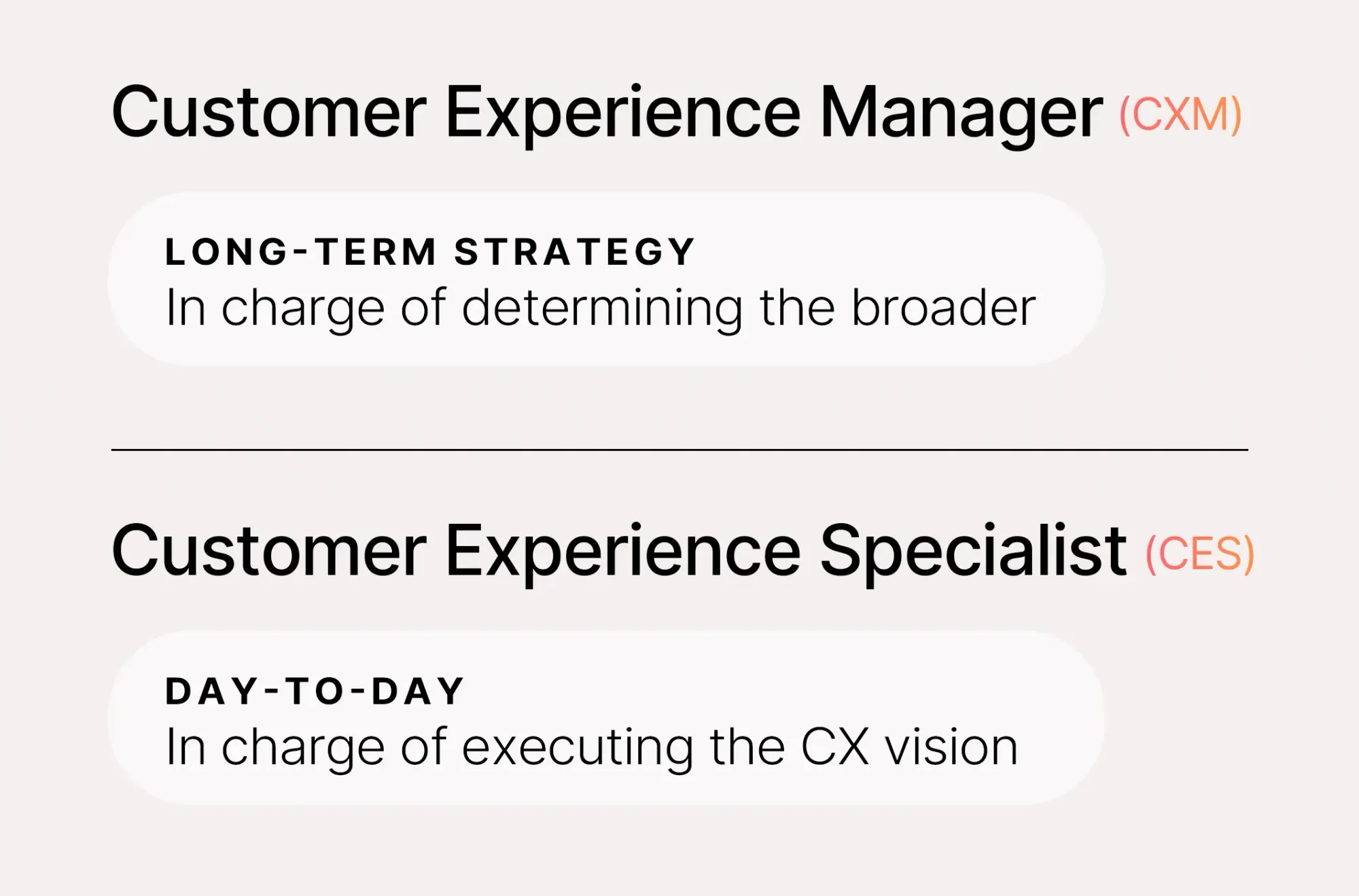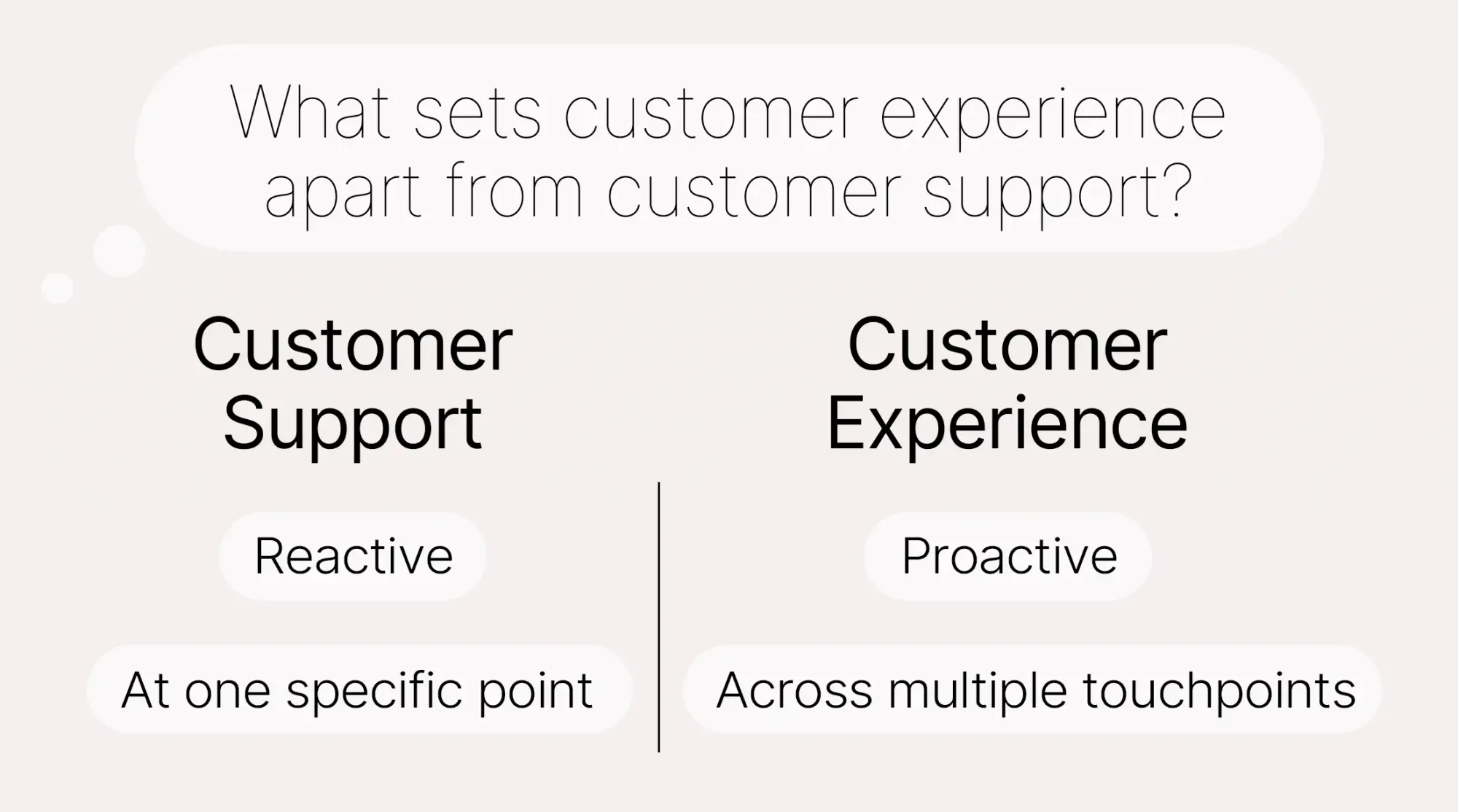The customer experience manager has meticulously crafted the perfect customer experience strategy. The vision is clear and embraced throughout the entire company.
But a strategy, no matter how groundbreaking, is only as good as its execution.
Enter the customer experience specialist.
This role is where the grand plans meet the reality that customers actually experience. The customer experience manager’s vision is tested in the fire of daily interactions that a CX specialist has a direct hand in.
What does a customer experience specialist do?
We talked a few weeks ago on the blog about what makes a great customer experience manager. So how does that role differ from a customer experience specialist?

A customer experience manager focuses on broader, more strategic high-level planning. They tend to dig into big-picture tasks like long-term vision and how market changes may affect their strategy.
Customer experience specialists, by contrast, are the hands-on team members that deal with more tactical tasks and sometimes interact directly with customers. Essentially, a CX specialist is the one to execute the plan set forth by the CX manager.
Their main day-to-day responsibilities may include:
- Monitoring customer health and engagement
- Gathering and implementing feedback
- Analyzing data
- And reporting insights
If I were to sum up in one word what trait a customer experience specialist needs to have to be successful, it would be a doer. They’re not afraid to (and likely love to) roll up their sleeves and move out of planning into actual execution.
Collaboration
Customer experience can never exist in a vacuum; a cross-functional strategy is core to creating an incredible customer experience across every moment in the journey, because each team holds a big piece of the puzzle.
And the customer experience specialist is one of the most important roles in maintaining this collaborative approach. They’re situated right at the intersection of customer interactions and internal processes, so collaboration is not just beneficial but essential for their success.
CX specialists rely on insights and support from a range of departments to maintain a seamless and holistic customer experience. The teams they put their heads together with often include:
- Marketing - Marketing and CX come together to ensure that communication is consistent, and to come up with targeted campaigns based on the insight CX uncovers.
- Sales - Both teams align on customer expectations and feedback, and sales pitches are often targeted based on CX findings.
- Product - The CX team shares customer feedback or data to guide feature enhancements and potentially the development of new products.
- Customer support/success - CS and CX work closely to refine support strategies and train support staff, as well as collaborate on handoff between teams when complex issues pop up.
The best customer experience specialists are proactive
Another common role that customer support specialists may get conflated with is a customer support specialist. And while there’s no doubt that there’s a ton of overlap between the roles, there are a few key differences.
One major difference is the scope. Customer support focuses on problem-solving at one specific point in the journey, while customer experience focuses on the overall experience across the journey.
The other, perhaps more meaningful difference is that customer support is reactive, typically only coming in to make things better after a problem has arisen, while customer experience (if it’s done the right way) is about being proactive.

Consider it like a defensive vs offensive team. While good defense can take you a long way, you’re never going to win a game if your offense never scores.
It’s the same in the business of CX. The only way to truly win is to take an offensive (or in other words, proactive) strategy to prevent problems in the first place and more importantly, drive behaviors that correlate with retention and satisfaction.
Since customer experience specialists are often the ones on the field, they’re the ones who are in charge of making sure that proactive action is being taken.
Key characteristics of a proactive customer experience specialist
To get the job done right, there are a couple of characteristics that are crucial for a customer experience specialist to have.
They need to be:
- Communicators. They’re naturally skilled communicators and have a desire to talk to and understand other people, both customers and members of their organization.
- Anticipators. They’re forward-looking and always want to make sure that they’re thinking ahead of the moment at hand. They know that things could change on a dime, and they’re ready to pivot.
- Preventers. This is where their anticipation leads to action. They know that the best way to solve problems is by preventing them in the first place, so they’re always looking for ways to intercept things that will detract from the customer experience.
Strategies a CES can use to boost their CX offense
Leverage technology
A customer experience specialist has a lot of day-to-day tasks on their plate, and technology can help them stay on top of everything they need to do and give them more strategic leverage.
Since so much of customer experience is wrapped up in understanding, especially on a personalized level, conversation sits at the heart of a good strategy. But CX specialists can only have so many conversations per day.
Conversational AI tools can help to scale the number of conversations the CX team has and create more personalized experiences without involving a human every time. By using the best tools, these conversations can help uncover new insights for a customer experience specialist to leverage.
User assistance platforms like Command AI can also bake in interactive abilities within your SaaS platform to continuously guide the experience. CX specialists are the ones who would typically spend a lot of time crafting things like onboarding checklists, product tours, and tips to put a lot of the CX legwork on autopilot in the platform.
Dig into the data consistently (and taking action on it)
Data is one of the most important components of a strong CX strategy, because it helps teams prioritize where to invest time, energy, and money. Since customer experience specialists are the “doers,” the task of analyzing data often falls to them. The best of the best are the ones who integrate data analysis into their everyday routine.
With consistent reporting and regularly keeping tabs on your customer experience metrics, CX specialists are able to better understand customer behavior, segment customers better, identify bad friction in the journey, and pull out insights to share with other teams.
While there’s a lot of action that CX specialists can take themselves, they’re often the ones who are sharing information with the CX manager to continue to craft the overarching, long-term strategy to enhance customer experience.
Talking to customers
Let’s tie this back around to the core characteristic of “communication.” While technology and data are a critical piece of scalable and lucrative CX strategies, empathy is at the heart of customer experience. That means that customer experience specialists need to have face-to-face (or more often, screen-to-screen) conversations with their customers to dig into topics that the numbers may not be telling them.
While conversational AI platforms are increasingly better at identifying tricky things like context and tone, there are still a few indicators, like body language, that they can’t yet pick up on. In addition to the understanding, these human-to-human conversations can help customers feel valued and understood, which can go a long way in creating an overall more positive experience.
Where plans meet practice
In CX, the real magic happens at the execution stage. The customer experience strategist steps in to turn flashy game plans into actual positive customer interactions, making sure that the strategy doesn’t stay stranded in the “locker room.” (Okay, we’ll stop with the sports analogy now)
Because of their on-the-ground position, a proactive mindset is critical. Being able to use some foresight to anticipate breaks in the customer experience allows them to pivot quickly and bench the negative experiences.
Sorry, I had to get one last sports pun in there.

















